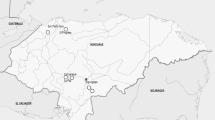Abstract
Reproductive traits and calving weight were assessed in Saudi camels, and non-genetic factors influencing them were studied using data collected at Al Jouf centre from 1987 to 2009. Age at first conception, age at first calving, open period, calving interval, gestation length and weight at calving of camels averaged 42.3 months, 54.8 months, 10.6 months, 22.6 months, 377.5 days and 591.9 kg, respectively. A mixed model including the camel as a random effect was used to assess the effect of environmental effects on the traits studied. Age at first conception and age at first calving were affected by camel’s birth year. Open period and calving interval were not affected by parity or year of calving. However, camels that calved from October to February had a calving interval of 2.5 months higher than those that calved from March to September. Gestation length was affected by season and year of calving but not by parity or sex of calf. Camels calving from March to September had a gestation length 6.6 days shorter than those calving from October to February. Weight at calving was affected by parity and year of calving but not by season of calving. It was concluded that an improvement in camel reproductive traits is possible both through improving management systems and utilisation of controlled breeding techniques.






Similar content being viewed by others
References
Abbas, B., Al Qarawi, A.A. and Al Hawas, A., 2000. Survey on camel husbandry in Qassim region, Saudi Arabia: herding strategies, productivity and mortality, Revue d’élevage et de médecine vétérinaire des pays tropicaux, 53 (3), 293–298
Abebe, W., Getinet, A.M. and Mekonnen, H.M., 2002. Study on live weight, carcass weight and dressing percentage of Issa camels in Ethiopia, Revue de médecine vétérinaire, 153, 713–716
Aboul-Ela, M.B., 1994. Reproductive performance of the one-humped camel under traditional management in the United Arab Emirates, Journal of Arid Environments 20 (1), 47–51
Almutairi, S.E., 2000. Evaluation of Saudi camel calves’ performance under an improved management system, Revue d’élevage et de médecine vétérinaire des pays tropicaux, 53 (2), 219–222
Aslam, M., Nawaz, M., Ali, I., Zia-ur-Rahman, M. and Sandhu, M.A., 2002. Determination of productive and reproductive traits in mountain camel, Proceedings of the 7th World Congress of Genetics Applied to. Livestock Production, 30, 549–552. (Communication N° 07-03)
Bakkar, M.N. and Basmaeil, S., 1988. Reproduction performance in Najdi camels, Proceedings of the 11th International Congress of Reproduction and Artificial Insemination, 1, 529
Beniwal, B.K. and Chaudhry, A.L., 1984. Age at first calving in Bikaneri camel, Indian Journal of Animal Sciences, 54, 598–599
FAO, 2009. FAOSTAT, FAO Statistics Division, FAO, Rome
Hermas, S.A., 1998. Genetic Improvement and the Future Role of the Camel in the Arab World: Problems and Opportunities, Proceedings of the 3rd Annual Meeting for Animal Production Under Arid Conditions, 2, 56–68.
Kadim, I.T., Mahgoub, O. and Purchas, R.W., 2008. A review of the growth, and of the carcass and meat quality characteristics of the one-humped camel (Camelus dromedaries), Meat Science, 80, 555–569
Kaufmann, B.A., 2005. Reproductive performance of camels (Camelus dromedarius) under pastoral management and its influence on herd development, Livestock Production Science, 92, 17–29
Khanna, N.D., Rai, A.K. and Tandon, S.N., 2004. Camel breeds of India, Journal of Camel Science, 1, 8–15
Megersa, B., Regassa, A., Kumsa, B. and Abunna, F., 2008. Performance of camels (Camelus dromedarius) kept by pastoralists with different degrees of experience in camel keeping in Borana, Southern Ethiopia, Animal Science Journal, 79 (4), 534–541
Mehta, S.C. and Sahani, M.S., 2009. Reproductive performance of Indian camel breeds, Indian Journal of Animal Sciences, 79 (2), 210–211
Musa, H.H., Shuiep, E.S., Ibtissam, El Zubier E.M and Chen, G.H., 2006. Some reproductive and productive traits of camel (Camelus dromedarius) in Western Sudan, Journal of Animal and Veterinary Advances 5 (7), 590–592
Richard, D. and Gérard, D., 1989. [Milk production of Dankali camels (Ethiopia)], Revue d’élevage et de médecine vétérinaire des pays tropicaux, 42 (1), 97–103
SAS, 1996. SAS/STAT, User’s Guide. SAS Institute, Cary, NC, USA.
Sharma, S.S. and Vyas K.K., 1971. Factors affecting gestation length in the Bikaneri camel (Camelus dromedarius), Ceylan Veterinary Journal, 19, 67–68
Tefera, M. and Gebreah, F., 2001. A study on the productivity and diseases of camels in Eastern Ethiopia, Tropical Animal Health and Production, 33 (4), 265–274
Vias G.F., Faye B., Kane Y., Diarra A., Laouali G., Daouda H., 2006. [Reproduction performances of female dromedary (Camelus dromedarius) in extensive breeding at Zinder (Niger)]. Revue africaine de santé et de productions animales, 4 (3–4), 111–116
Wilson, R.T., 1986. Reproductive performance and survival of young one-humped camels on Kenya commercial ranches, Animal Production, 42, 375–380
Yagil, R. and Etzion, Z., 1980. Milk yield of camels (Camelus dromedarius) in draught areas, Comparative Biochemistry and Physiology, 67, 207–209
Acknowledgements
This work was performed under the UTF project Camel breeding, protection and improvement centre (UTF/SAU/021/SAU; FAO/Ministry of Agriculture, Saudi Arabia).
Author information
Authors and Affiliations
Corresponding author
Rights and permissions
About this article
Cite this article
Almutairi, S.E., Boujenane, I., Musaad, A. et al. Non-genetic factors influencing reproductive traits and calving weight in Saudi camels. Trop Anim Health Prod 42, 1087–1092 (2010). https://doi.org/10.1007/s11250-010-9529-y
Accepted:
Published:
Issue Date:
DOI: https://doi.org/10.1007/s11250-010-9529-y




